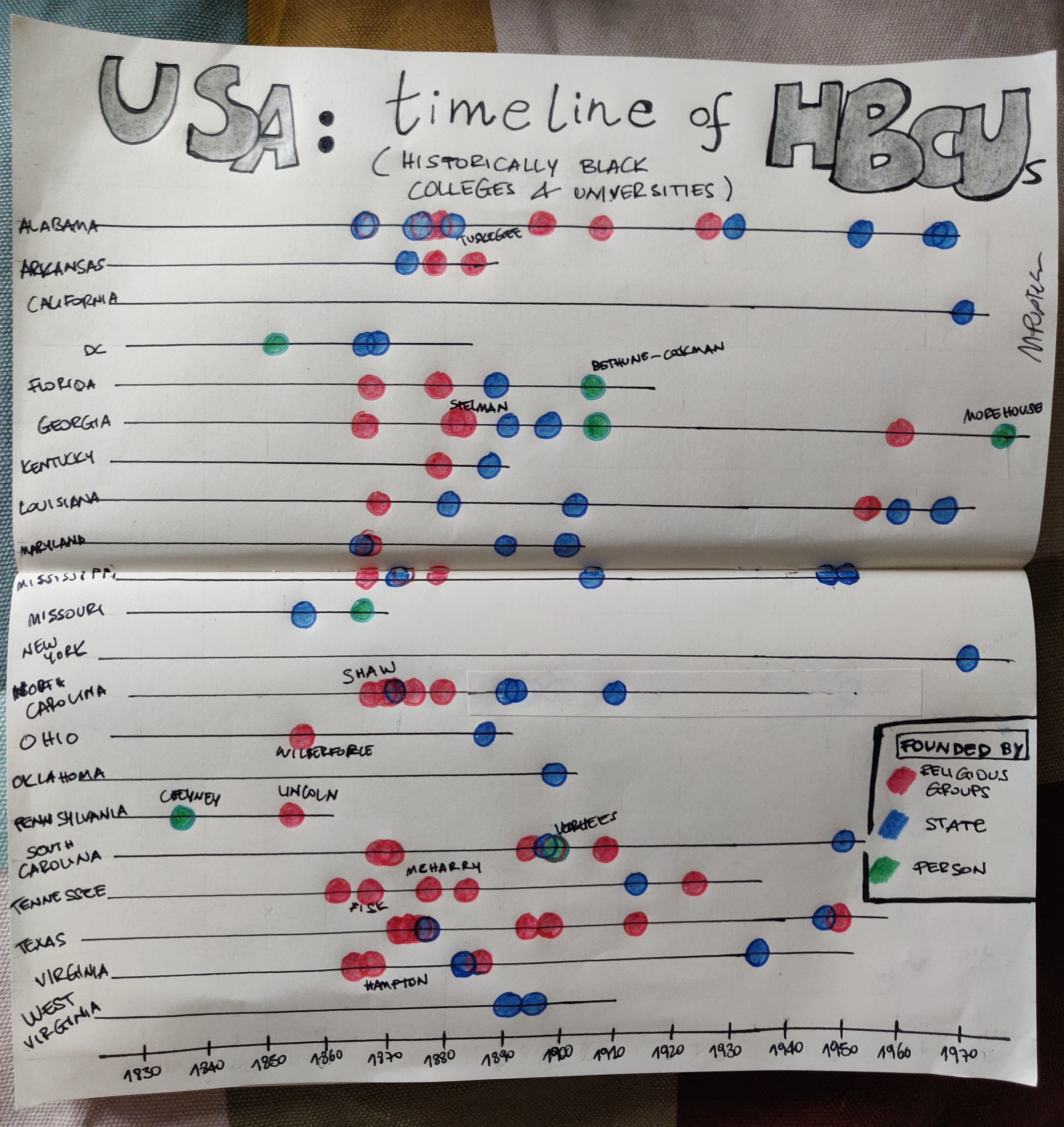Elizabeth Evelyn Wright
Elizabeth Evelyn Wright was the first black woman to found a place of high education in the USA: Voorhees University, South Carolina, 1897. Voorhees University classifies as an HBCUs (“Historically Black Colleges and Universities”), named and recognised in 1965 as part of the Higher Education Act, which provided also dedicated funding.
I found 102 of them, currently active - there’s probably more depending on how you count, with merges and renamings, and I’ve collected data about their year of creation, state and founder.

At the age of 16, Wright moved from her native town of Talbotton, Georgia to Tuskegee, Alabama after learning of the opening there of a new university for black students, Tuskegee University, founded in 1881 with the name of Tuskegee Normal School for Colored Teachers. The year was 1888 and she enrolled there.
Wright was the child of formerly enslaved parents, an African-American man and a Cherokee woman. The family was poor - conditions were hard for black folks, especially in the South. She likely used trains for the ride to Alabama as the railway was the most popular mode of transportation for long distances at the time: a train journey in 1888 costed circa 2-3cents/mile, which makes for a total expenditure for Wright between $2 and $3, using an estimate of a total of 100 miles covered. In today’s money, that’s a ballpark of $60-$100 - likely a lot of money for someone of Wright’s background. It is very interesting to note that the same train journey today wouldn’t be possible - several railway lines that used to operate in the area have been discontinued or operate just as freight services, like for instance the Western Railway of Alabama.
She worked as a servant/domestic during the day, frequented courses at night and found herself mentors who would support her education, eventually graduating in 1894. Then she moved to South Carolina, held teaching jobs and decided to give back to the community by founding schools for black students herself, with the special aim to provide industrial and agricultural education: she was keen to equip black folks with the abilities to succeed in life beyond the menial jobs they had been enslaved to do before abolition. Things really didn’t go well initially: not only did she encounter huge resistance by many white people, but several of her attempts at building schools were burned down. Until the one in Denmark, with an early name of Denmark Industrial School, succeeded. It was 1897 and the school started as a single room on top of a grocery store. She then secured a generous donation from benefactor Ralph Voorhees, a wealthy local man with an interest in spending his large fortune in good causes, which enabled the school to move to a new location and expand, and eventually take his name (it was Wright’s decision to do so). Since then, the school has offered education to many people, remains predominantly black-frequented and has largely expanded its offering in terms of programs and degrees.
Raised in the Episcopal faith, religion has been a strong driver behind Wright’s ambition; the church, as well as individual figures, have also supported her all along and financed her endeavours. She travelled a lot around all her life, often on foot, to raise money and also awareness and her legacy remains huge.
Of a sick disposition all her life, she died aged only 34 in 1906. Her grave lies on the university campus.
Sources
I’ve used a combination of generative AI tools to aid the collecting of information about this, specifically chatGPT and Gemini with Deep research. I’ve checked information and sources for reliability.
- Wikipedia page for E E Wright
- Page about her on the Voorhees University website
- Voorhees University documentary about E E Wright
- A brief timeline of HBCUs on UNCF
- E E Wright on the South Carolina Encyclopedia
- The Nomination Form of Voorhees University on the National Register of Historic Places
- There’s a marker plaque in Talbotton about E E Wright